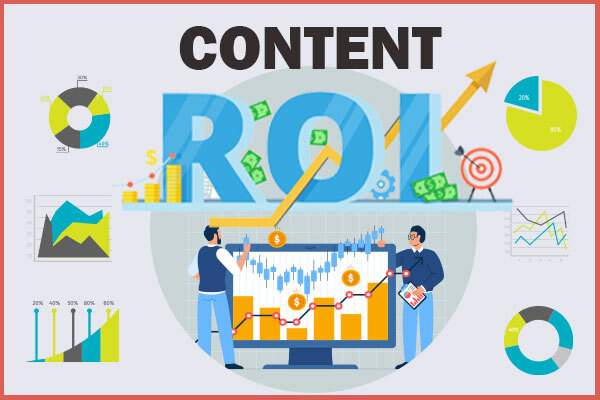
In this fast-moving world, the metrics of understanding the content are changing day by day. One must always understand that Content is King! User engagement will increase with the right content and help the company grow in immeasurable aspects. Speedwell IT Solutions ensure the best Digital Marketing Services in Noida with professionals' understanding and years of industry experience.
For every business, be it SMEs or a Multinational corporate giant, a superior grade to measure the ROI (Return on Investment) achieved on the average spent is of utmost importance. It helps determine the level of success accomplished through the marketing efforts.
A marketer's sole task is to ensure that the outlined strategy works towards attaining the end goal, i.e. full-fill the brand's core objective. Therefore, marketers generally curate various p & c that are tried, tested and revamped to uphill the Brands' Share of Voice (SoV) in the market.
It seems like a long - tedious task to many, but in actuality, it's not. The finish line to this motto of measuring content marketing ROI is based upon two key factors, i.e. efficiency and effectiveness. One needs to look at how cost-efficient and market effective content marketing strategy is. Once this question is sought, estimating the return on investment becomes much simpler.
Five Important Metrics to measure Content Marketing ROI
To measure the ROI, there are five important metrics one needs to keep a track on, they are:

Online Traffic
It's a volume-oriented metric that's the simplest and easiest way to measure the impact of the marketing efforts. It involves considering key aspects like monitoring web traffic, individual page reach, average Time spent, etc. This helps the brand know their audience's demographic and psychographic structure and the tonality of content they are comfortable with.
Key things included in it are:
- Overall web traffic
- Source of the traffic (Platform that helps generate the highest level of engagement)
- Average Time Spent
- Estimated Bounce Rate
- Popular landing page
The most preferred software to estimate online traffic is Google Analytics. It helps one understand their audience and conduct in-depth research on the matter.
Measuring Overall Web Traffic is a great way to measure the content marketing ROI, but it also has loopholes like changes in SEO trends, site updates, promotions, etc.
Onsite Engagement
Engagement! Engagement! Engagement!
What's the point of marketing content that doesn't intrigue the audience? In simple words, it's not worth it!
While measuring the valuable content marketing strategy, it's advised to check the audience's response.
For a landing page, this sect is measured via two important aspects, i.e. Bounce Rate and the amount of Time Spent by viewers on a particular landing page.
These aspects help one drill deep within their audience's mindset and understand what drives their taste. In general, a bounce rate between the range of 26 to 40 per cent is considered excellent, whereas, for an average on-set, a bounce rate between the range of 51 to 70 per cent is acceptable.
Sales Volume
Once the content marketing efforts generate good traffic and engagement ratio, the next thing to look upon is the volume of sales it can generate. The core of any marketing strategy is to meet the Brands end goal - Business Expansion. For the same, a strategic approach towards inbound marketing is non-negotiable.
The conversion rate determines how well the business lead is persuaded and nurtured with the right content. The sales volume is at the heart of every growing business marketing strategy, as all marketing efforts focus on expanding the business's market share.
Qualified Leads
The sole motive behind any business opting for a content marketing strategy is to generate more leads, qualified leads to be precise. The goals for the same may vary from generating awareness, increasing market share (SoV - Share of Voice), and redefining brand image. Each of these goals ends with one simple metric - Conversion Rate!
But the question may arise: How should one measure qualified leads?
In actuality, there are three important things to look after to measure the qualified leads:
- Keeping a tap on the CTA (Call-to-action) button for example here is the call to action
- Number of Content Downloads
- Number of purchases made
Social Shares
Social Media is here to stay, and there's no doubt about it. If you want to know the quality and precision of your content, check for the social share!
For instance, checking upon:
- Number of Likes
- Number of Comments
- Number of Shares
- Number of views on a video campaign
- The rate of Increase in followers
This helps in estimating the number of eyeballs a certain content can grab. It's indeed a Brand's best bet to connect directly with the audience. It also gives the brand liberty to ruffle cliches and create a fresh image in the market.
Social media engagement is comparatively easy to measure, as most social media platforms like Facebook and Instagram come with an inbuilt analytics system.
Different tools like Tweetdeck, BuzzSome, and HubSpot are also helpful as they share key details about the type and tonality of content that's making buzz on social media. Its leverage, subsequent reach and impact in the market can be created.
Final Thought
The Campaign may be able to generate high traffic and high engagement, but in the end, it's important to know how much revenue it has been able to generate. There are many ways to look at it, but the above-discussed five metrics are most important to measure the effectiveness of the content marketing strategy. For a better understanding of this, one can always rely on Speedwell IT Solutions and contact us for any types of information and services that are required!
Looking for a trustworthy IT Services and Solutions provider? Connect with us today and get Cost-Effective Quotations! Give us a quick call at +91-7827171844!
































































